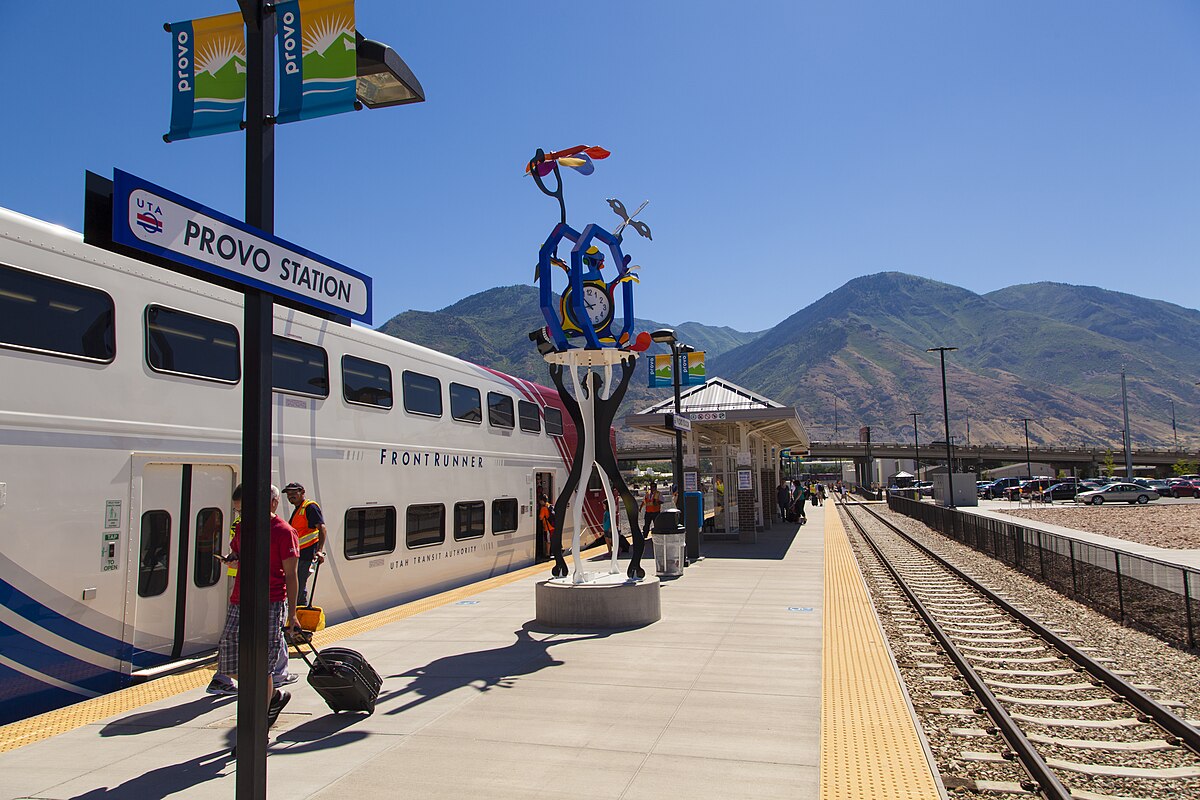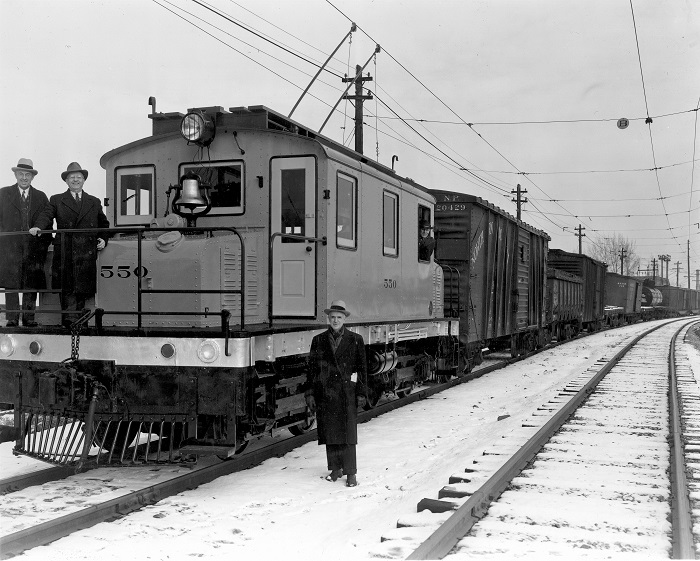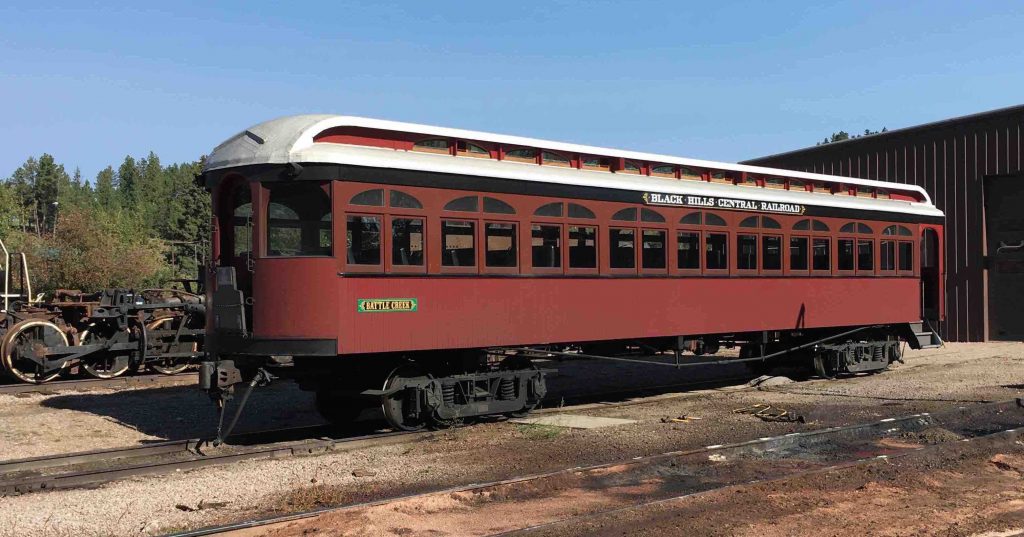Thursday, December 31, 2020
Trolley Thursday 12-31-20 - Happy New Year
Tuesday, December 29, 2020
Trolley Tuesday 12/28/20 - The New York, Westchester & Boston Railway
Thursday, December 24, 2020
Trolley Thursday 12/24/20 - The New York State Railways
Thursday, December 17, 2020
Trolley Thursday 12/16/20 - The IND and NYCTA R-Type Subway Cars
Tuesday, December 15, 2020
Trolley Tuesday 10/15/20 - New York City Elevated Cars of the IRT and BMT
Friday, December 11, 2020
Trolley Thursday 12/11/20 - A Brief History of the New York Subways and Elevateds, Part 2
Tuesday, December 8, 2020
Trolley Tuesday 12/08/20 - A Brief History of New York's Subways and Elevateds, Part 1
Thursday, December 3, 2020
Trolley Thursday 12/03/20 - The New York Railways & the Third Avenue Railway System
Tuesday, December 1, 2020
Trolley Tuesday 12/01/20 - The Brooklyn Rapid Transit Company
Thursday, November 26, 2020
Trolley Thursday 11/24/20 - Pacific Electric Caboose No. 1969
Thursday, October 29, 2020
Trolley Thursday 10/29/20 - Charlie on the MTA
Tuesday, October 27, 2020
Trolley Thursday 10/27/20 - Notable Streetcars and Rapid Transit of Boston
Thursday, October 22, 2020
Trolley Thursday 10/22/20 - The Mattapan-Ashmont High-Speed Line
Tuesday, October 20, 2020
Trolley Tuesday 10/20/20 - Lowell National Historic Park & Seashore Trolley Museum
Thursday, October 15, 2020
Trolley Thursday 10/15/20 - Springfield Electric Railway
Tuesday, October 13, 2020
Trolley Tuesday 10/13/20 - The Shelburne Falls & Colrain Street Railway
Thursday, October 8, 2020
Trolley Thursday 10/8/20 - The Boston, Revere Beach & Lynn Railroad
Tuesday, October 6, 2020
Trolley Tuesday 10/6/20 - The Boston Elevated Railway
Thursday, October 1, 2020
Trolley Thursday 10/1/20 - The Boston Subway System
Thursday, September 24, 2020
Trolley Thursday 9/24/20 - The Hershey Transit Company
Tuesday, September 22, 2020
Trolley Tuesday 9/22/20 - The Pittsburgh Railways
Friday, September 18, 2020
Trolley Thursday 9/17/20 - The Conestoga Traction Company
Tuesday, September 15, 2020
Trolley Tuesday 9/15/20 - Philadelphia & Western Railroad
Friday, September 11, 2020
Trolley Thursday 9/10/20 - The Philadelphia Transportation Company
Wednesday, September 9, 2020
Trolley Tuesday 9/8/20 - The Brill Company and The Cars of the PRT
Thursday, September 3, 2020
Trolley Thursday 9/3/20 - The Philadelphia Rapid Transit Company
Tuesday, September 1, 2020
Trolley Tuesday 9/01/2020 - Iowa Traction Railway
Thursday, August 27, 2020
Trolley Thursday 8/27/20 - The Peter Witt Streetcar
Tuesday, August 25, 2020
Trolley Tuesday 8/24/20 - Cleveland Railway, Shaker Heights Rapid Transit, and the Cleveland RTA
Thursday, August 20, 2020
Trolley Thursday 8/20/20 - Cincinnati Street Railway
Lucius Quinctius Cincinnatus (519-430BC) was a Roman civic and military leader, and dictator, whose legacy is one of simple and faithful leadership. Twice ascended to dictator (back when such a term was neutral or positive rather than negative), Cincinnatus relinquished his power peacefully to the Senate after his duty was done, even at his old age, without any fuss or delay. His understanding and control over the temptations of absolute power made him a figure in civic values, and others like President George Washington have taken his "call to agriculture" to heart. Similarly, the streetcars of Cincinnati served their city with the same faithfulness displayed to the city's namesake, but unlike the famous dictator, the Cincinnati Street Railway's time came much too early, even for a system just shy of operating for 100 years. Today, we look back on the Cincinnati Street Railway with fond memories and find out just what made this system so unique.
Tuesday, August 18, 2020
Trolley Tuesday 8/18/20 - The Columbus Railway Power & Light Company
Thursday, August 13, 2020
Trolley Thursday 8/13/20 - The Big and the Small of the Indiana Electrics
Tuesday, August 11, 2020
Trolley Tuesday 8/11/20 - The Fort Wayne Transit Company
Thursday, August 6, 2020
Trolley Thursday 8/6/20 - The Indiana Railroad and its Constituents
Tuesday, August 4, 2020
Trolley Tuesday 8/4/20 - The Northern Indiana Commuter Transportation District (or New South Shore Line)
Friday, July 31, 2020
Trolley Thursday 7/30/20 - Guest Piece - Milwaukee Streetcars by Jonathan Lee
(Also all photos today are credited to Joseph Canfield, author of "TM, The Milwaukee Electric Railway & Light Company," unless otherwise noted. Find the book link in the epilogue.)
Tuesday, July 28, 2020
Trolley Tuesday 7/28/20 - The Pullman Company's Streetcars
Friday, July 24, 2020
Trolley Thursday 7/23/20 - Illinois Traction System
Tuesday, July 21, 2020
Trolley Tuesday 7/21/20 - The Chicago Transit Authority
Thursday, July 16, 2020
Trolley Thursday 7/16/20 - The Chicago Loop
Chicago is home to many prominent civil engineering masterpieces: The Hancock Center, the Sears Tower (yes those are their names, fight me), and the many bridges that line the Chicago River. One architectural wonder that tends to go over people's heads, though, is the famous Chicago Loop circling Lake Street, Wabash Avenue, Van Buren Street, and Wells Street. Originally opened in 1897, the Loop not only serves as an essential part of any Chicagoland commuter but it is also an architectural marvel above and below with its reams of cross beams and ribbons of steel rail creating beautiful, functional art. Despite its shape, the story of the Loop is more of a tangled knot of four different strings coming together into one solid mass, like your headphones in your pocket. Join us as we uncover the hidden history above our heads on today's Trolley Thursday!
Tuesday, July 14, 2020
Trolley Tuesday 7/14/20 - The Chicago Aurora & Elgin
Thursday, July 9, 2020
Trolley Thursday 7/9/20 - The South Shore Line
Tuesday, July 7, 2020
Trolley Tuesday 7/7/20 - The North Shore Line
Thursday, July 2, 2020
Trolley Thursday 7/2/20 - Chicago Surface Lines
Tuesday, June 30, 2020
Trolley Tuesday 6/30/20 - New Orleans Regional Transit Authority
Thursday, June 25, 2020
Trolley Thursday 6/25/20 - The Perley A. Thomas Carworks
Tuesday, June 23, 2020
Trolley Tuesday 6/23/20 - New Orleans Streetcars, 1893-1983
Friday, June 19, 2020
Trolley Thursday 6/18/20 - DART Light Rail
Tuesday, June 16, 2020
Trolley Tuesday 6/16/20 - The New El Paso Streetcar
Thursday, June 11, 2020
Trolley Thursday 6/11/20 - The Interurban Railway Museum
Tuesday, June 9, 2020
Trolley Tuesday 6/9/20 - The Texas Electric Railway
Thursday, June 4, 2020
Trolley Thursday 6/4/20 - El Paso International Streetcar
Tuesday, June 2, 2020
Trolley Tuesday 6/2/20 - The Laredo Electric Railway Company
Thursday, May 28, 2020
Trolley Thursday 5/28/20 - A Utahn Reflection by Josh B.
To close off this month's discussion of Utah streetcars, trolleys, and mostly interurbans, I've asked my Utah expert this month, Josh B., to write up a guest piece. This is going to be a regular practice considering I have friends with an interest in streetcars all over the United States, and possibly even the world. I'll probably think up a better name than "Guest Piece" though. Without further ado, take it way, Josh!
 |
| Bamberger No. 353, southbound leaving Kaysville (Gordon Cardall) |
 |
| Magna, Utah in 1937, with a Salt Lake & Utah train in the distance. (Don Strack) |
 |
| Salt Lake & Utah steeplecab No. 101 switches freight cars as parlor car 751 passes by on the main. (Gordon Cardall) |
In a previous post, your Motorman highlighted a boxcar that was purchased by the Salt Lake & Utah, but diverted to the Salt Lake Garfield & Western when payment was not forthcoming. This is a single example of the SL&U's extensive freight roster of refrigerator cars, drop bottom gondolas, boxcars, and flatcars. The Utah-Idaho Central boasted a similarly sized selection of freight cars, largely utilized for the sugar beet and fruit traffic originating on its far-flung agricultural branches to Plain City and North Ogden. The Bamberger had a smaller freight roster, but its 50-foot paper service boxcars could be seen as far away as Denver, where they drove the Denver & Rio Grande Western employees mad due to deferred maintenance and constant malfunctions.
 |
| The new Frontrunner heavy-rail commuter service at Provo Station, formerly served by the Bamberger Railroad. (Ricardo63) |
Their position paralleling the D&RGW and the Union Pacific along the Wasatch Front forced the larger steam railroads to offer competitive pricing for local traffic, a pleasant side effect that assisted the economic advancement of the otherwise isolated rural populations. North Ogden residents still fondly remember the “Dummy Line,” the UIC's branch up to the North Ogden Bench, but visit the North Ogden Historical Museum and the narrative focuses on its importance in developing the orchards that thrived at the base of Mount Ben Lomond, not the streetcar services it also provided.
 |
| Ogden City Railway No. 100, year unknown but a perfect example of a steam dummy (Don Strack) |
 |
| A Utah-Idaho Central interurban unloads in the middle of the street at Logan, UT, heading Northbound, 1947. (Gordon Cardall) |
/arc-anglerfish-arc2-prod-sltrib.s3.amazonaws.com/public/PIJMOGPDXNHTHEOQNVLKGGSU6U.jpg) |
| The Salt Lake Tribune) Gov. Gary Herbert speaks as UTA celebrates its 50th birthday with a news conference at the state Capitol in Salt Lake City on Tuesday, March 3, 2020. At left is Carolyn Gonot, executive director of UTA. (Trent Nelson, Utah Tribune) |
This year Utah Transit Authority is celebrating its 50th year; the anniversary stickers adorning all Frontrunner and Trax cars represents that the state is slowly remembering the importance of a publicly accessible passenger rail system. As we acknowledge the interurban renaissance, remember that the interurbans also built the state's industry just as much as its public transport, and look forward to a day when, as urban planners and futurist dreamers predict, an electrified rail network once again stretches from the Idaho border to southern Utah County, and perhaps this time beyond.
 |
| UTA's Trax Light Rail service, continuing the legacy of electric mass transit. (Bond Buyer) |
Wednesday, May 27, 2020
Trolley Tuesday 5/26/20 - The Kennecott Electric Railroad
Thursday, May 21, 2020
Trolley Thursday 5/21/2020 - The Bamberger Bullets (and Other Rolling Stock)
 |
| Bamberger's Jewett No. 355 and Niles 401 at Ogden, UT, July 1949 (Don Ross) |
 |
| Bamberger Railroad 550 (ex-San Diego Electric Railway) on a chilly freight run, year unknown. (Utah State Historical Society) |
 |
| An HO representation of Bamberger's first diesel, ALCO RS-1 No. 570. The unique hood was caused by an EMD rebuild in 1951. (Model by Gordon Cardall, currently owned by Josh B.) |
 |
| Bamberger (Ex FJ&G) 128 in Salt Lake City, showing off its prominent streamlined brow (Don Ross) |
 |
| An original Brill advertisement for the Bullets, this one for the Philadelphia & Western Railroad. (Philadelphia NRHS) |
 |
| Bullet No. 129 at Ogden with Jewett 302, showing just how small and low to the ground the sporty Bullets were. (John Smatlak) |
| Bullet 125 departs Ogden with two heavyweight cars behind it, 1950. Note the higher pole base to raise it the same level as the bigger interurbans. (John Smatlak) |
 |
| The OERM crew out at Layton, Utah in 1971, ready to remove No. 127 for transport to Perris. Motorman Gordon Cardall is in front of the headlight hole. (John Smatlak) |
 |
| Bamberger No. 127 in its new home at the OERM's Barn 2, with shedmate Pacific Electric 331. (Bob Vogel) |
 |
| Ex-Bamberger No. 128 in its new guise as the Art City Trolley. (Google Maps) |
 |
| Ex-Bamberger No. 126 in storage at the Ogden Defense Depot (Gino DiCarlo) |
 |
| Ex-Bamberger 403, now Black Hills Central 403, "Battle Creek", in service in South Dakota |
Tuesday, May 19, 2020
Trolley Tuesday 5/19/20 - The Bamberger Railroad
Thursday, May 14, 2020
Trolley Thursday 5/14/20 - The Bits and Pieces of the Salt Lake & Utah
Tuesday, May 12, 2020
Trolley Tuesday 5/12/20 - The Salt Lake and Utah Railway
Thursday, May 7, 2020
Trolley Thursday 5/7/20 - The Survivors of the Saltair
...! *spits* Wait, this is salt water!
 |
| Car 500 waits with Steeplecab 401 and an unknown second car to be scrapped at Salt Lake Yard, as an unidentified diesel prowls behind. (Gordon Cardall, Donstrack) |
 |
| Car 502 heads a train outbound to the Saltair, with an open trailer sandwiched inbetween, year unknown (Donstrack) |
Following the SLGW purchasing two diesels in December 1951 (both GE 44 tonners, originally New York, Ontario & Western), Cars 501 and 502 were selected for rebuilding and were stripped of their electrical equipment. In their places, the cars gained a new flat-arched roof and began working alongside their open trailers in diesel-hauled mixed trains, giving them another lease on life that cars 500, 503, 504 and 505 never got. Passenger service continued after the second generation "Saltair II" closed in 1958, delivering workers to the Morton Salt plant until May 20, 1961, when cars 503 and open trailers 305 and 306 were reunited and hauled once more by 44-tonner DS-1 as a "farewell" fan trip.
 |
| The last Saltair passenger run, May 20, 1961. (Gordon Cardall, Donstrack) |
 |
| Saltair 502 and 501 (respectively) at their original display plinth, year unknown. (Clint Thomsen's grandmother) |
 |
| Saltair 502 near the end of her life, burned, battered, and busted. (Viv Smith) |
 |
| Car 502 prepares to meet its maker, February 2012. (Clint Thomsen) |
 |
| SLGW Open Car No. 306 at her new home in Portola, CA, showing off her characteristic easy-boarding outdoor steps. Hello Dolly, anyone? (Western Railroad Museum) |
The other two would be donated to the Utah Railroad Museum in Ogden, UT, located at their Business Depot. Like the 306, both are still in derelict condition with warping wooden planks and peeling paint. The Golden Spike Chapter of the Railway and Locomotive Historical Society plans on moving the cars to their main site at Ogden Union Station, but currently a donation of $20-30,000 is needed for such a monster move. Only time will now tell if the cars can be moved before another arsonist gets to them.
 |
| A contemporary (2017) Google Maps overhead of the Ogden Business Depot, showing the two other remaining Saltair open cars with a Bamberger "Bullet" body in-between. (Preserved Traction) |
 |
| Saltair M.C. 3 poses like it's an official company photograph, 1959. (Dave England, Donstrack) |
The final piece of SLGW stock for discussion today is also the only piece of running passenger stock owned by the Saltair. Designated "Motor Car No. 3", or "M.C.3", this little gas "doodlebug" railcar was originally built by the American Car & Foundry in 1935 for the
Seaboard Air Line Railroad. It was in service as number 2026 until being sold to the Aberdeen and Rockfish as their number 106. The SLGW would purchase the car third-hand in 1951 following their 44-tonners and used it to supplement passenger runs from Salt Lake City to the Morton Salt Plant.
Once all passenger service ended, the eye-catching shovelnose car was sold once more to the California Western Railroad in Fort Bragg and Willits, California. It was renumbered M-300, rebuilt as a full-passenger car, and continues to see regular use alongside "Skunk Train" car M-100, replacing the former M-200 that was since sold to the Niles Canyon Railway. Over 100 years after the end of the Saltair, it still continues its proud heritage as a tourist hauler in some small way.
 |
| California Western M-300 (left) and M-100 (right), living up to the "Skunk Train" nickname with all those righteous gas fumes. (Chatzi473) |


